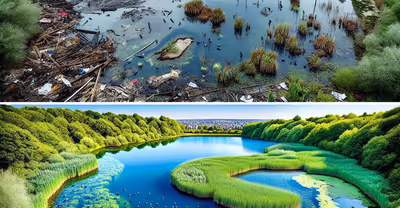
Key Takeaways
- Environmental projects can revive polluted lakes.
- Recreational and natural habitats benefit from cleanups.
- Restoration efforts have transformed numerous lakes.
Imagine transforming a derelict space into an oasis.
Picture a lake, once left for ruin, now teeming with life and activity.
Extreme makeovers aren't just for homes or people—they're transforming lakes across the country, turning ecological eyesores into vibrant ecosystems and recreation hubs.
Waterfronts that were once ecological afterthoughts are now conservation success stories.
From murk to sparkle, these top 10 lake transformations showcase nature's resilience and human ingenuity.
We've dug deep to find the most incredible lake revivals.
You’re about to explore restorations that breathe new life into damaged ecosystems, boost local economies, and create serene natural escapes.
We’re committed to showing you the real power of environmental comeback stories, ensuring you get the full picture of what's possible with commitment and care.
Onondaga Lake, New York

Hey, have you heard about the dramatic turnaround of Onondaga Lake in New York?
It's a tale of transformation that's really something to behold!
This once heavily polluted lake was famous for all the wrong reasons, but now it's making waves with its comeback story.
Then: The Troubled Past
- Polluted: Onondaga Lake was labelled as one of the most polluted in the U.S.
- Industrial Waste: A cocktail of municipal and industrial waste contributed to its poor state.
- Public Concern: The condition of the lake was a sore point for locals and environmentalists.
Now: The Remarkable Recovery
- Cleanup Efforts: Years of dedicated cleanup have paid off.
- Mercury Removal: Key to the cleanup was addressing the mercury levels.
- Habitat Restoration: The restoration of natural habitats has brought life back to the lake.
- Community Pride: Now restored, the lake area is enjoyed by many once again.
The Facts as They Stand:
- Decades of Cleanup: It has been a long process, but worthwhile.
- Investment in Nature: Significant resources have been invested in cleaning up the lake and it shows!
Isn't it incredible what a bit of grit and determination can do?
Your once local embarrassment is now a source of pride.
Just imagine the picnics and strolls by the water you can enjoy now, all thanks to the massive effort to give Onondaga Lake a serious makeover!
Caddo Lake, Texas/Louisiana
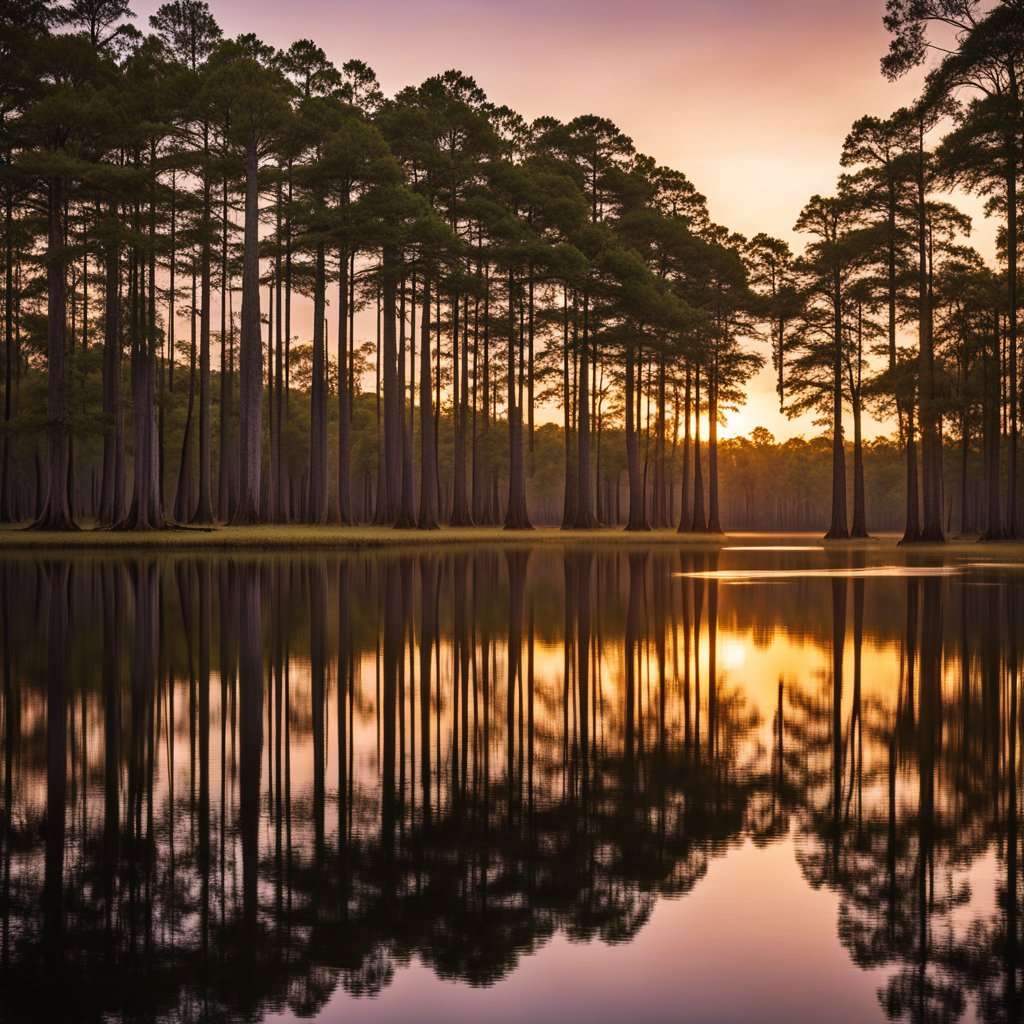
Have you ever wondered how nature can bounce back with a little help from conservation efforts?
Take Caddo Lake, straddling the border of Texas and Louisiana—a true testament to ecological resilience.
This natural lake and bayou, covering a massive 25,400 acres, boasts a rich ecosystem beneath a canopy of bald cypress trees adorned with Spanish moss.
Here's a fun fact: Caddo Lake is named after the Native American Caddoans who resided in the area before the 19th century.
But, it's not just about history—this lake has undergone an incredible transformation in recent times, particularly in the wrestle against invasive species such as giant salvinia plants.
These pesky floaters may sound like they're from a B-grade monster movie, but in reality, they've been quite the nemesis for Caddo Lake's biodiversity.
Restoration efforts included:
- Systematic removal of giant salvinia
- Introduction of salvinia-eating weevils
- Community involvement and educational programs
The results?
A come back of not just the lake's aesthetic charm but also a balanced habitat where wildlife can thrive once again.
If you're keen to visit, imagine gliding through its tranquil waters, now clearer and teeming with life, perhaps catching glimpses of rare birds or the splash of a fish—it's nature's way of saying 'thank you' for a second chance.
Remember, it's up to folks like you to continue respecting and preserving these treasures.
Are you ready to be part of the story of Caddo Lake's amazing comeback?
Lake Apopka, Florida

Remember hearing about Florida's most polluted lake?
Well, Lake Apopka is no longer the poster child for environmental despair—thanks to impressive turnaround efforts, it's becoming a thriving ecosystem once more!
How?
Let's dip our toes into its waters.
What happened?
Agricultural discharge had Lake Apopka in a chokehold, but significant strides have been made towards its recovery.
You might not believe it, but this was once a glimmering fish haven.
- Then: Agricultural runoff suffocated life here.
- Now: Recovery road is underway!
By the Numbers:
- $200 million+: A hefty sum taxpayers invested in Lake Apopka's revival.
- Decades: How long restoration has been on the agenda.
Curious about the wildlife?
Picture this: you, binoculars in hand, spotting a Roseate spoonbill along the shoreline.
A young alligator might even grace your presence near Magnolia Park.
That's right, the biodiversity's bouncing back too!
Recent Highlights:
- Magnolia Park Eco-Education Center: A new hub shining a spotlight on Lake Apopka's comeback story.
- Hundreds of bird species: The area's become a serious nest fest!
This lake's script has flipped from contaminated to recovering, and while things are still looking up, you've got to respect the journey.
Who doesn't love a good comeback kid?
Keep an eye on this aquatic underdog – Lake Apopka's story is still being written, and your front row seat to nature's resilience awaits.
Jordan Lake, North Carolina
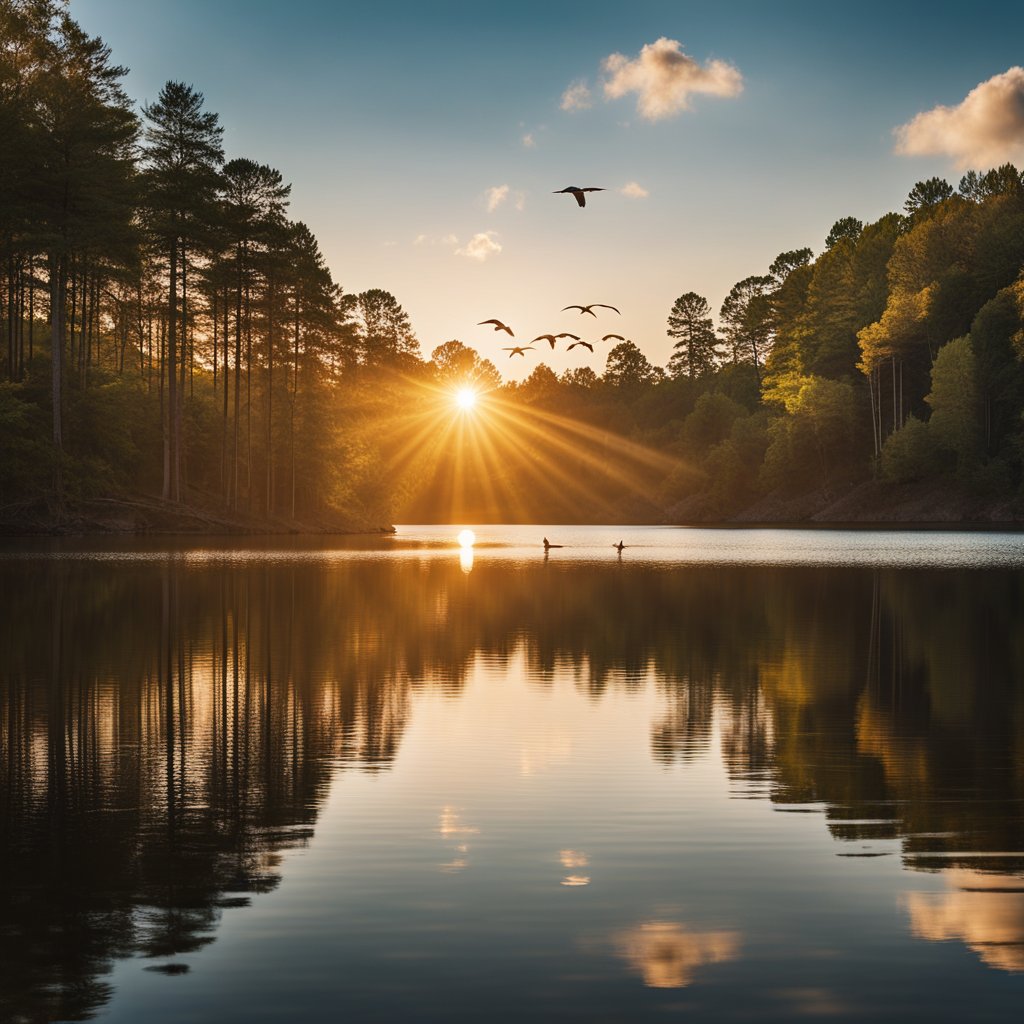
Have you ever stood by the waterside, casting a gaze over Jordan Lake, and pondered its hidden depths?
What if I told you that beneath those serene waters lies the ghost of a community past, echoes of an era before the lake even existed?
History Underwater
- Creation: 1960s
- Original Name: New Hope Lake
- Renamed: 1973, B. Everett Jordan Dam and Lake
Before The Transformation Originally, New Hope Valley was known for its tricky navigation, thanks to a terrain vulnerable to flooding.
Jordan Lake, as we know it, didn't come into being by chance.
It was man-made in the 1960s, a direct response to those relentless floods.
Ecosystem Makeover Now, think about a lake that isn't just a pretty face, but one that's had to smarten up its act.
With upstream development, our pal Jordan has faced some real challenges.
Cue the game-changing projects directly targeting nutrient pollution and taking strides in water quality improvements.
A Peek into the Past Isn't it amazing to think about the layers of history beneath the surface?
In recent times, as drought caused the lake's levels to ebb, remnants of the old community surfaced.
Yes, you got it—an actual underwater ghost town!
- Farms and grave sites: Discovered after drought-induced water retreat.
- Remnants: Visible signs of life before the lake's creation.
So, each ripple in Jordan Lake isn't just water – it's a story waiting to be told.
Next time you visit, remember you're skimming stones over a tapestry of North Carolina's heritage.
How's that for a hidden history lesson?
Mono Lake, California
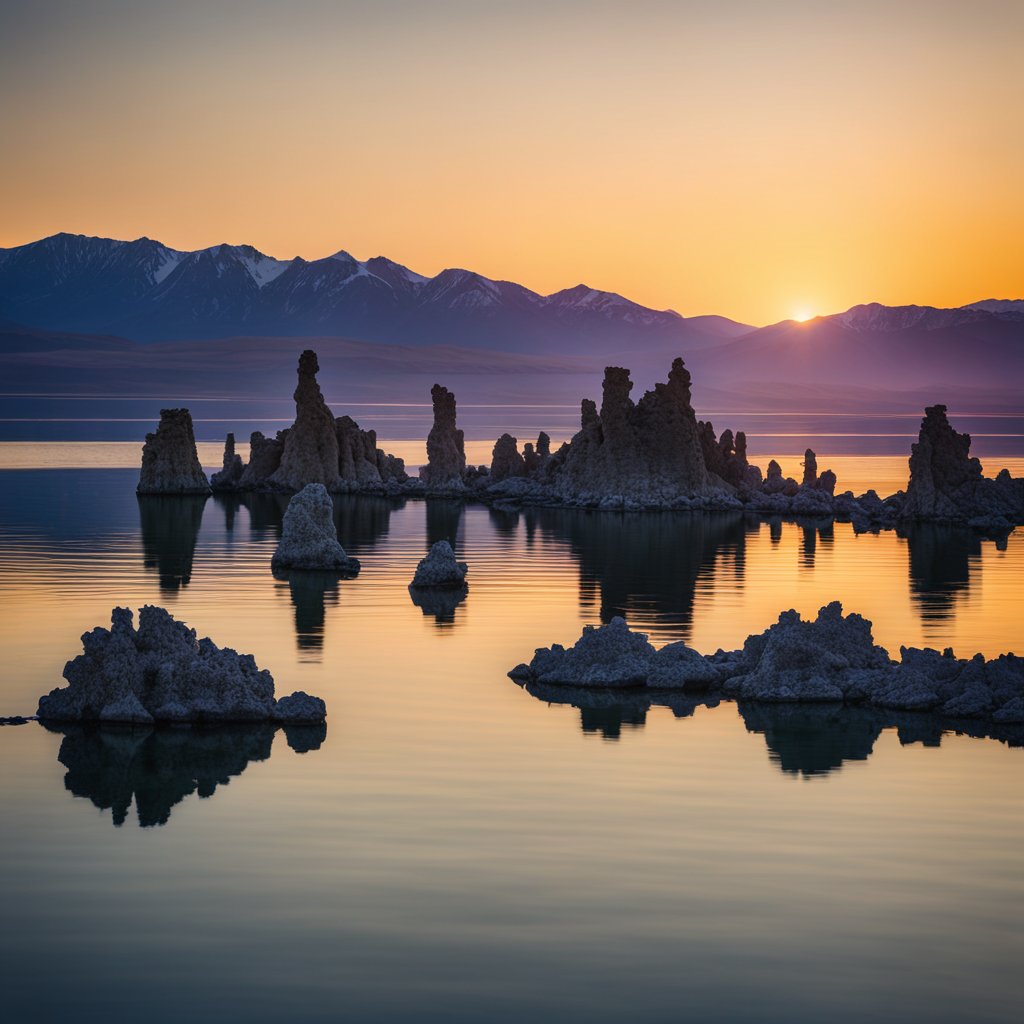
Have you ever witnessed a stunning transformation?
Mono Lake in California is like the phoenix of the lake world, truly a spectacle of resilience and natural recovery.
Then: A Lake in Peril Imagine a lake bustling with life, then picture it slowly withering away.
Back in the days following water diversions that started in the 1940s to quench the thirst of Los Angeles, Mono Lake faced such a fate.
Its water levels plummeted, and the once-teeming ecosystems began to fade.
Key Struggles:
- Lowered water levels
- Disrupted ecosystems
- Threatened migratory bird populations
Now: A Comeback Story But hey, nature had other plans!
Conservationists rolled up their sleeves and got to work.
What did they do?
They implemented water diversions limits and focused on stream rehabilitation.
And guess what?
It worked wonders!
What’s Changed?
- Water levels are on the rise
- Ecosystems have bounced back
- Migratory birds are having a field day, with the lake serving as a crucial feeding stop once again
By the Numbers:
- Covers over 70 square miles
- Home to trillions of brine shrimp
- Supports millions of migratory birds
It's not just a triumph for Mono Lake, it’s a beacon of hope for other struggling ecosystems.
So if you ever swing by California, why not pay a visit to Mono Lake?
It’s an ecological comeback kid that’d give you a brilliant feathered welcome!
Lake Erie, USA/Canada
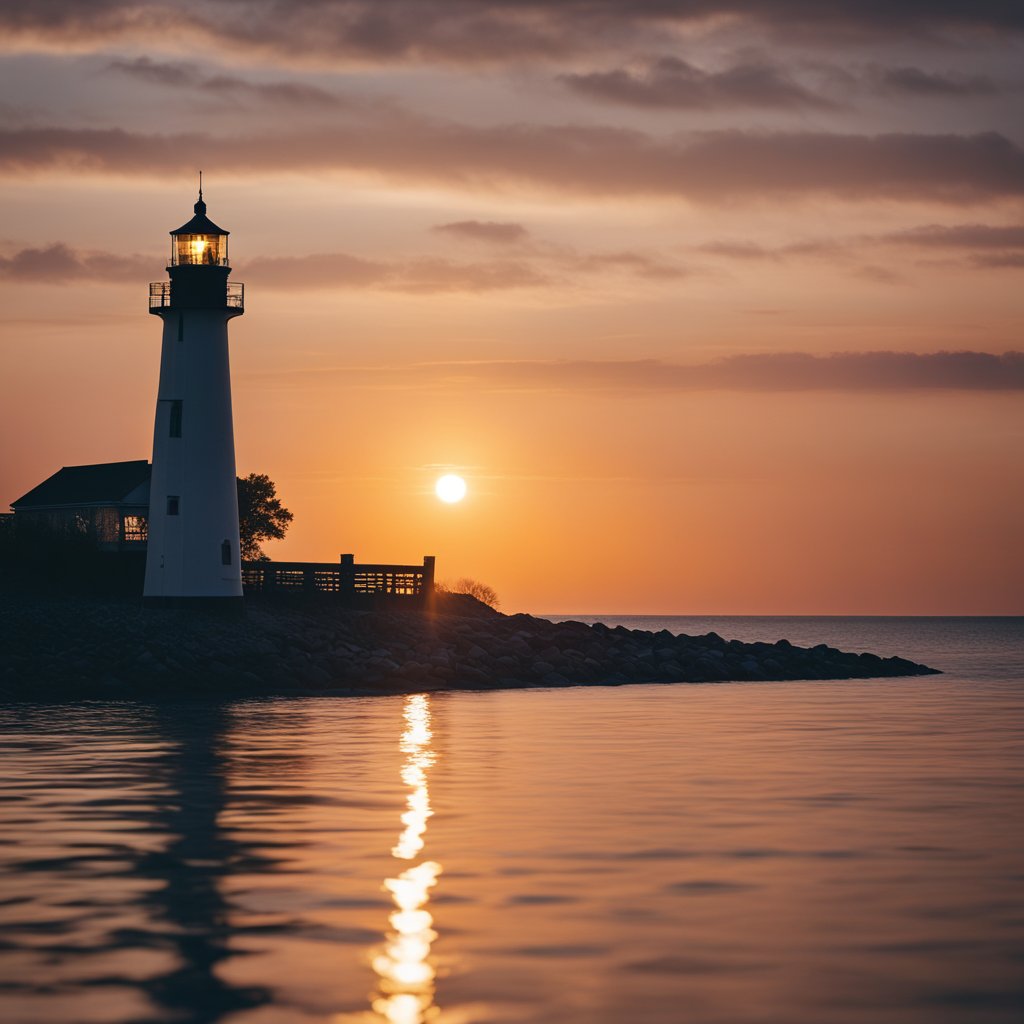
Hey, have you ever thought about how a lake can undergo a massive makeover?
Let's talk about Lake Erie – it's quite the spectacle!
Nestled between the United States and Canada, Lake Erie isn't only about the border it straddles; it's about the profound changes it has seen over the years.
Remember those worrying times back in the '60s and '70s when pollution had Lake Erie in a tough spot?
Eutrophication had taken hold, leading to excessive growth of algae.
But hey, we humans can fix our mess, right?
Through rigorous pollution controls, Lake Erie began to breathe anew.
Although algal blooms can still be a party pooper, there's been significant progress.
Here's a quick dive into Lake Erie's stats:
- Surface Area: Roughly 9,900 square miles, making it a vast expanse of water to explore.
- Average Depth: A cozy 62 feet, which is shallower than its Great Lake siblings.
- Watershed Population: About 12 million people call the Lake Erie watershed home, living in and around this blue gem.
- Water Dependency: Not one, not two, but over 10 million people rely on Lake Erie's waters! Talk about being popular, eh?
Despite its challenges, Lake Erie's story is one of resilience and recovery.
A lake once troubled by pollution, now acts as a source of life and livelihood for millions.
So, take a moment to appreciate our friend Lake Erie – a shimmering example of how nature can bounce back with a helping hand from its human neighbors.
Isn't that a tale worth sharing at your next trivia night?
Salton Sea, California
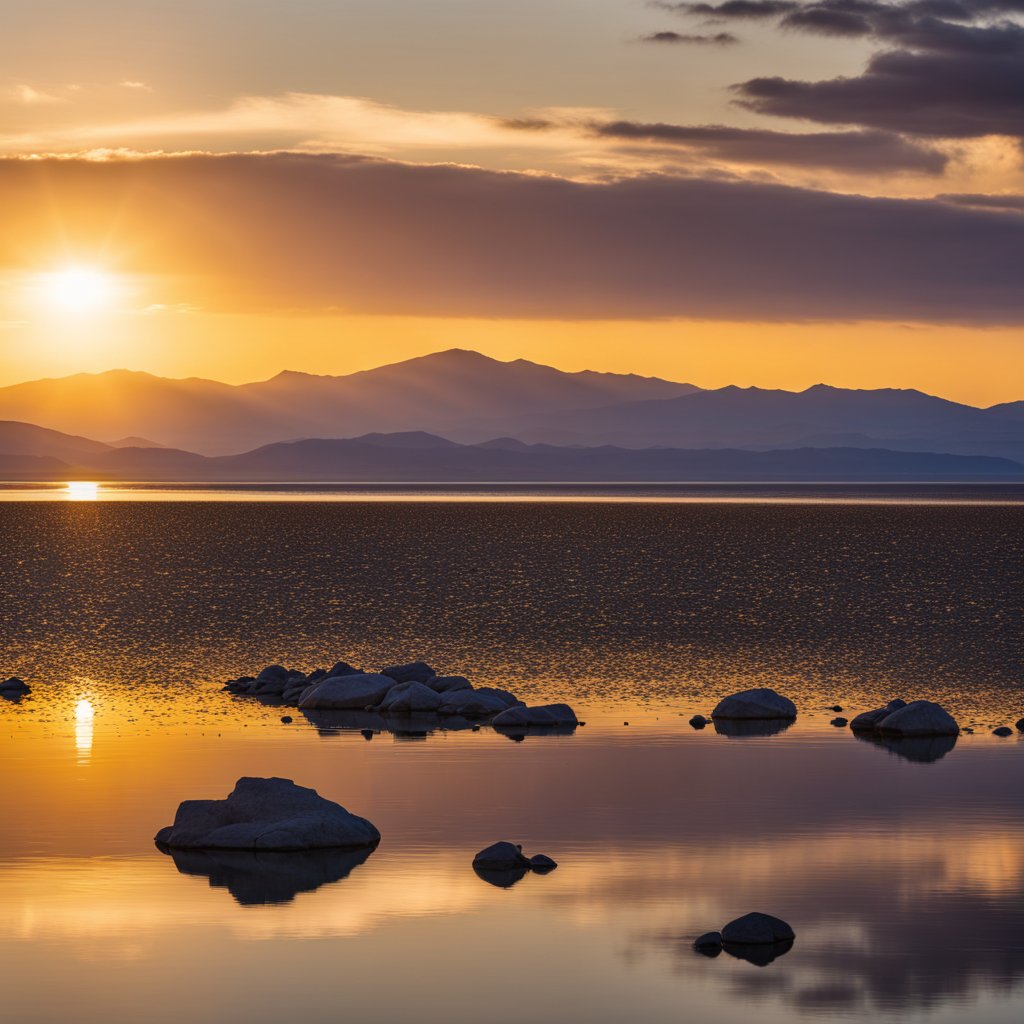
Have you ever witnessed a lake's dramatic transformation?
The Salton Sea in California is a classic case of human intervention gone awry and nature's remarkable power to adapt.
Picture this: back in 1905, the Colorado River breached an irrigation canal, and the water flowed into the desert basin that would become the Salton Sea.
Fast forward to the 1950s, and it was an oasis of leisure, filled with boaters and vacationers soaking up the sun.
But wait, it gets saltier—literally.
Without an outlet, the Salton Sea's salinity levels have risen alarmingly, becoming saltier than the ocean.
The lake now struggles with environmental issues such as shrinking shorelines and high salinity, threatening the local ecosystem.
- Location: San Andreas Fault, 125 miles southeast of Los Angeles
- Creation: Accidental, in 1905 through Colorado River flood
- Size Peak: Mid-20th century tourist hotspot
- Current Challenge: Receding shorelines, high salinity
In response to these issues, various proposals and actions are in play to give this ecological underdog a fighting chance:
- Reducing water inflow from agricultural runoff
- Creating wetlands to support birdlife
- Managing salinity levels to sustain fish populations
While it's no longer the glitzy getaway it once was, the Salton Sea's tale isn't over.
With continued efforts, perhaps we'll see a new chapter in its story—one where its ecological health is restored, giving those birds and fish a reason to stick around.
Wouldn't that be quite the comeback?
Clear Lake, California
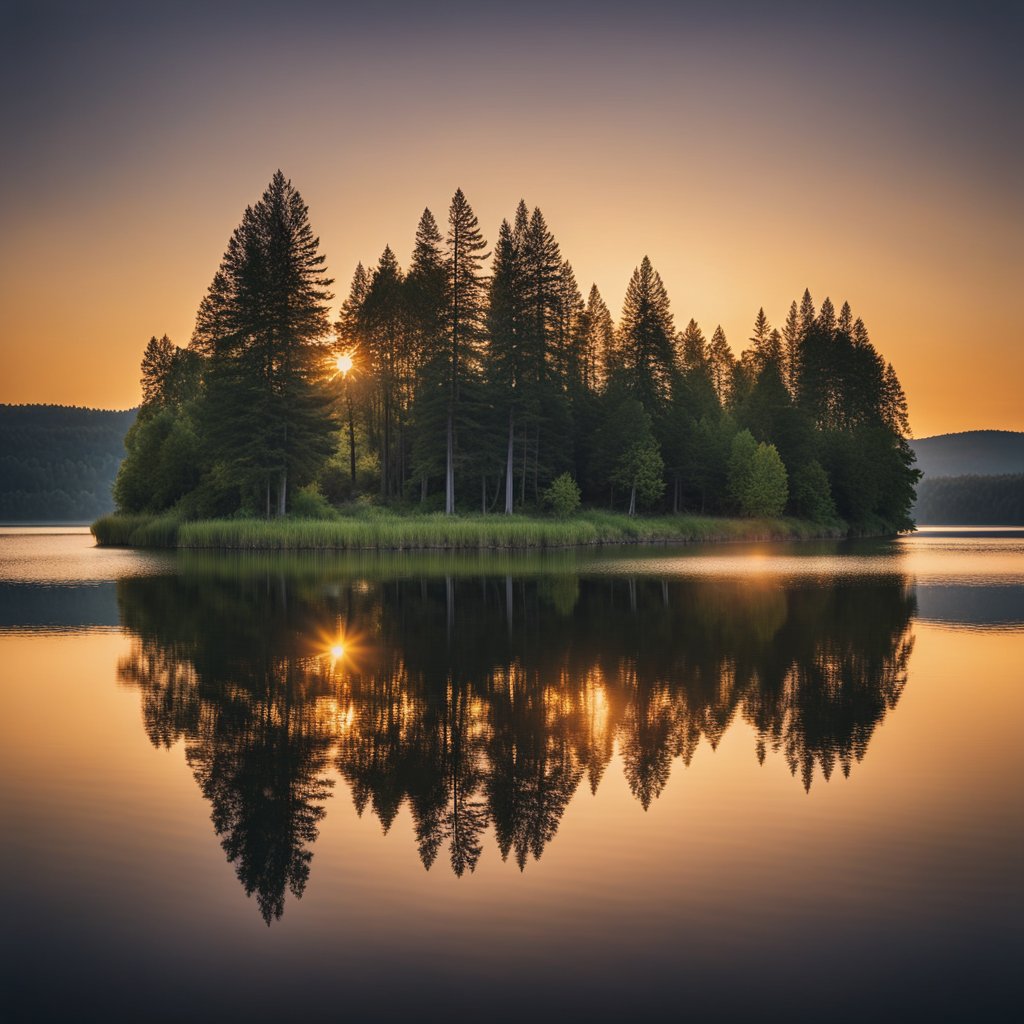
Have you ever wondered about Clear Lake in California and its transformation?
Historically, this scenic water body has had its share of challenges, including mercury contamination and nutrient pollution.
You might be asking, "What's being done about it?" Well, there's good news!
Efforts to Revitalize Clear Lake:
- Cleanup Initiatives: Teams have rolled up their sleeves, implementing cleanup programs aimed at reducing pollution levels.
- Wildlife Support: Clear Lake's flora and fauna have seen a boost, thanks to rehabilitation efforts.
- Community Engagement: Local groups are getting involved, fostering an environment where everyone plays a part in the lake's well-being.
Remember, maintaining a lake isn't just about making it look good—it's about ecosystem health and sustainability.
Clear Lake's turnaround is a testament to what can be achieved with concerted effort and community support.
So, whether you're a local resident or planning a visit, you're part of the ongoing journey to keep Clear Lake, well... clear!
Bear witness to nature's remarkable resilience and take pride in the difference every small action can make.
Lake Washington, Seattle
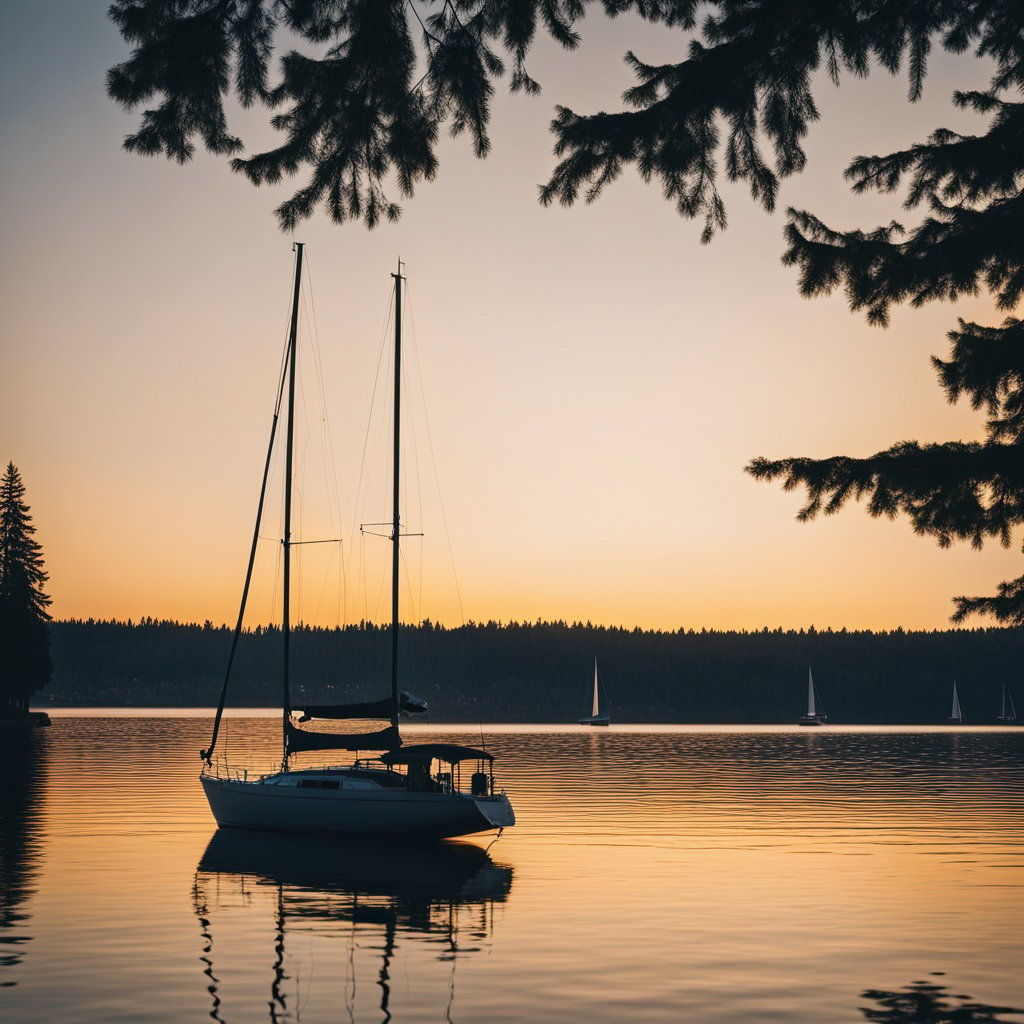
Let's take a step back to the 1950s when Lake Washington waved a not-so-clean flag due to heavy pollution.
But fast forward to today, and you'd hardly recognize it!
How about a little transformation magic?
Sewage was repurposed elsewhere, and voilà, the lake turned into a hotspot for both fun-seekers and wildlife aficionados.
Ever wondered how big big is?
Picture this: Lake Washington stretches around 18 miles from north to south and spans about 3 miles at its widest point.
That's plenty of room for all your boating, swimming, or lakeside picnicking plans.
Here's a quick glimpse of the transformation:
- Pre-1917: A vast body of water with more extensive islands and peninsulas.
- Post-Ship Canal (1917): A change in the lake’s physical makeup, opening up travel to Puget Sound.
Facts for the curious:
- Deepest Point: Approximately 200 feet—now that's deep!
- Historical Tidbit: Settlers started exploring the area shortly after Seattle's founding in 1851.
And don't even get me started on what lies beneath the surface.
Fancy a sunken village?
The inky depths of Lake Washington are like a time capsule with all sorts of submerged treasures.
Impressed?
You should be!
Lake Washington's makeover is not just about cleaner water.
It's a testament to resilience, proving that with a bit of human ingenuity and respect for nature, we can co-create spaces that thrive.
Next time you're in Seattle, why not swing by and see the transformation for yourself?
Just remember to bring your sense of adventure (and maybe a life jacket, just in case).
Devils Lake, North Dakota
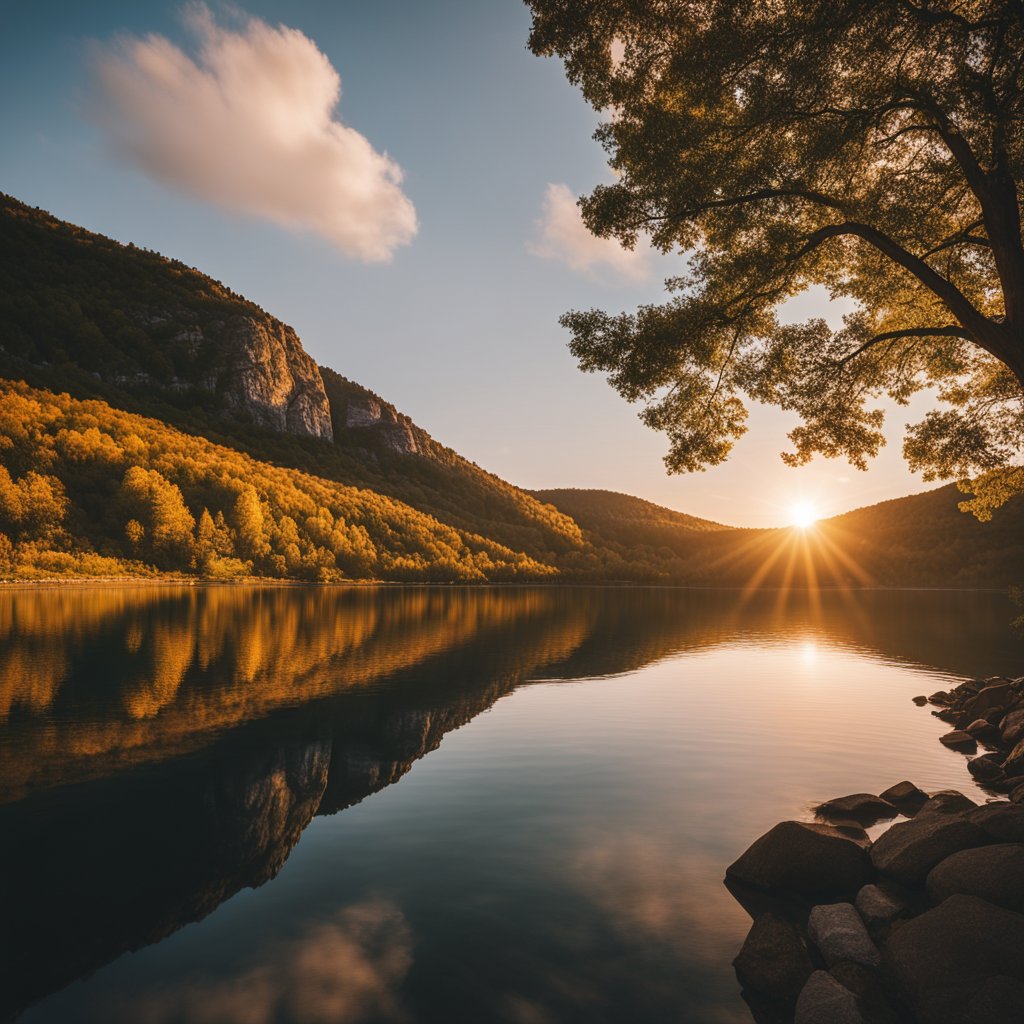
Ever wondered about lakes with a knack for dramatic changes?
Let me introduce you to Devils Lake in North Dakota.
This lake's had quite a journey over the years, don't you think?
Here's what's been going on:
History Recap:
- Founded: A spot known since the 1890s for its growing populations.
- First House: Built in 1882.
- Names: Originally dubbed Creelsburg and then Creel City, it finally settled on Devils Lake in 1884.
Struggle With Water:
- Size: Devils Lake is the largest natural body of water in the state, now spreading over 160,000 acres.
- Flooding: A real drama queen with a tendency to flood, affecting towns and agriculture for decades.
Recent Years:
- 2016: Not the best year for farmers. A rise in the lake's level put 130,800 agricultural acres out of commission. Yep, that's farming land nearly the size of Orlando, Florida, underwater!
Impact on Economy:
- Losses: A staggering $36.2 million in direct losses for the agricultural sector in 2016 alone.
The Response:
- Have you ever tried to hold back water with just sandbags and good intentions? The state has valiantly spent nearly $1 billion on efforts to prevent flooding—talk about commitment!
Devils Lake has been a fickle friend to North Dakota, but the local response has shown resilience and dedication.
So, next time you're pondering the power of nature, give a thought to Devils Lake, won't you?
It’s certainly keeping everyone on their toes!


